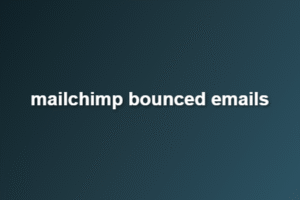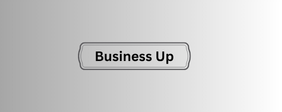Imagine you throw a ball, but it hits a wall and comes back. That’s a bounce. In email, a bounced email means it was sent, but it couldn’t be delivered. Mailchimp tells you when an email bounces. This information is very helpful. Many bounced emails can hurt your sending reputation. Internet service providers, like Gmail or Yahoo, might think you are sending bad emails. They might send your good emails to spam folders. Or even block them completely. This is not good for your business.
Two Main Types of Bounces
There are two main kinds of bounced emails: soft bounces and hard bounces. They are different, and each needs a different way to handle them. Knowing the brother cell phone list difference helps you keep your email list clean. A clean list means more people see your important messages. It also saves you money on your Mailchimp plan. Mailchimp often charges based on how many people are on your list.
Soft Bounces: Temporary Roadblocks
Soft bounces are like a temporary “door is closed” sign. The email server tried to deliver your email. But something stopped it for a short time. Maybe the person’s inbox was full. Or the server was busy. It could also be that your email was too big. Mailchimp unlock your business growth with text blast marketing will try to send these emails again. They will try for a few days. If it still doesn’t go through, it becomes a hard bounce.

Soft bounces can happen for various reasons. For example, a server might be down for maintenance. Or a recipient’s email account could be angola lists over its storage limit. Sometimes, your email might hit a spam filter temporarily. It’s a sign that something is not right, but it’s not permanent. You don’t need to remove these contacts right away. Keep an eye on them.
Common Soft Bounce Causes
Full Inbox: The recipient’s email storage is full.
Server Downtime: The receiving email server is temporarily offline.
Message Too Large: Your email file size is too big for the server.
Temporary Server Issues: The server is busy or has other short-term problems.
Mailchimp’s Handling of Soft Bounces
Mailchimp is smart about soft bounces. If an email soft bounces multiple times, Mailchimp marks it. After several tries over a few days, if it still can’t deliver, it becomes a hard bounce. This is helpful. It keeps your list healthier.
Hard Bounces: Permanent Problems
Hard bounces are serious. They mean the email can never be delivered. It’s like trying to send a letter to a house that doesn’t exist anymore. Once an email hard bounces, Mailchimp automatically removes that email address from your list. This is a good thing. You don’t want to keep sending to bad addresses.
Hard bounces are often caused by permanent issues. The email address might be wrong. Or the person might have closed their account. It could also be a fake email address. Sending too many emails to hard bounce addresses hurts your sender reputation. This can make it harder for your good emails to get through. So, understanding these is key.
Why Do Hard Bounces Happen?
Invalid Email Address: The email address simply does not exist.
Fake Email Address: Someone signed up with a made-up email.
Closed Account: The email account has been shut down.
Domain Name Doesn’t Exist: The part after the “@” sign is wrong.
Keeping Your Email List Clean
A clean email list is your best friend in email marketing. It means fewer bounces. Fewer bounces mean better delivery rates. This also means Mailchimp thinks you are a good sender. So, your emails are more likely to reach the inbox. Regularly cleaning your list saves you money too. You are not paying for contacts that don’t receive your emails. It’s a win-win situation.
Mailchimp helps by automatically removing hard bounces. But you can do more. Regularly check your reports. Look for patterns in soft bounces. Sometimes, a lot of soft bounces to one domain might mean a problem with that server. You can also ask people to confirm their email addresses. This is called “double opt-in.”
How to Reduce Bounced Emails
Reducing bounces is easier than you think. First, make sure people give you their correct email addresses. Use clear forms on your website. Tell them what kind of emails they will get. This sets clear expectations. Also, avoid buying email lists. These lists often have many old or fake addresses. This will lead to many bounces.
Next, check your list regularly. If someone hasn’t opened your emails in a long time, consider removing them. Mailchimp has tools to help you do this. Also, use Mailchimp’s double opt-in feature. When someone signs up, Mailchimp sends a confirmation email. They have to click a link in it. This proves their email is real.
Best Practices for a Healthy Email List
Use Double Opt-In: Always make new subscribers confirm their email.
Clean Your List Regularly: Remove inactive or unengaged subscribers.
Segment Your Audience: Send relevant content to different groups.
Never Buy Email Lists: These lists are usually full of bad addresses.
Ask for Valid Emails: Make sure your sign-up forms are clear.
Monitor Your Reports: Pay attention to bounce rates in Mailchimp.
Understanding Mailchimp Reports
Mailchimp provides detailed reports. These reports show you how well your emails are doing. You can see how many people opened your emails. You can also see how many clicked on links. Most importantly, you can see your bounce rate. This is the percentage of emails that bounced. A low bounce rate is good. A high bounce rate means you have work to do.
Look at your Mailchimp campaign reports. Find the “Bounced” section. It will show you a list of all the bounced emails. It will also tell you if they were soft or hard bounces. This information is very important for keeping your list healthy. If you see a lot of soft bounces to the same domain, it might be a temporary server issue. If you see many hard bounces, you need to be careful about where your emails are coming from.
What to Do After a Bounce
When an email hard bounces, Mailchimp automatically takes care of it. They remove it from your list. You don’t need to do anything extra. This is one of the great things about using Mailchimp. They help protect your sender reputation. But for soft bounces, you need to pay attention. If a contact soft bounces often, it might be time to remove them.
Sometimes, a contact might reach out and say they aren’t getting your emails. If they are on your bounced list, you can ask them for a different email address. Or, confirm their current one is correct. Always remember to get their permission again before adding them back to your list. This is called “re-permissioning.”
Preventing Future Bounces
Prevention is always better than cure. To prevent future bounces, focus on building a quality email list. Get people to sign up willingly. Offer them valuable content. This makes them want to receive your emails. Regularly review your Mailchimp audience. Remove anyone who has not interacted with your emails in a long time. These “unengaged” contacts can also eventually lead to bounces.
Consider asking people to update their preferences. Maybe they only want certain types of emails. Giving them control helps keep them engaged. It also ensures they are getting emails they want. This reduces the chance of them marking your emails as spam. This can also lead to fewer bounces. A healthy email list is a strong foundation for any successful email marketing plan.
